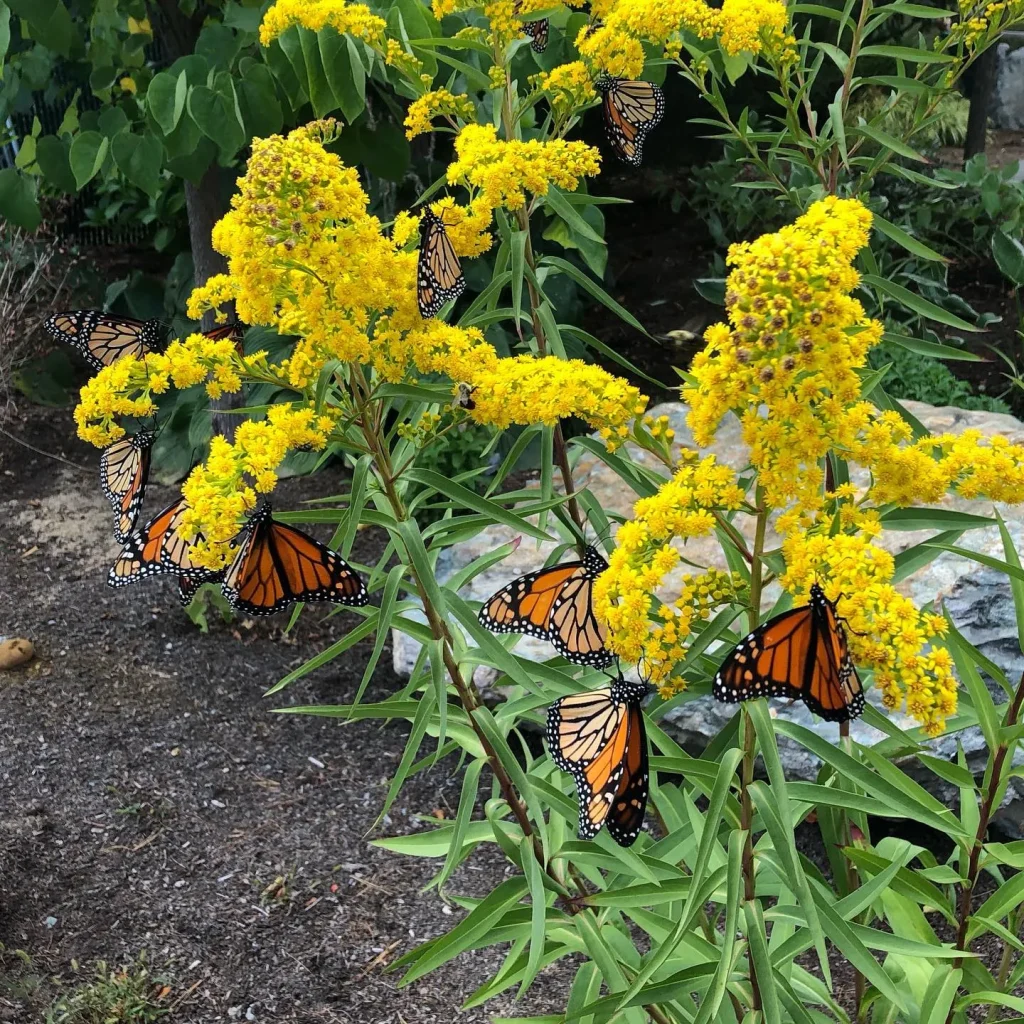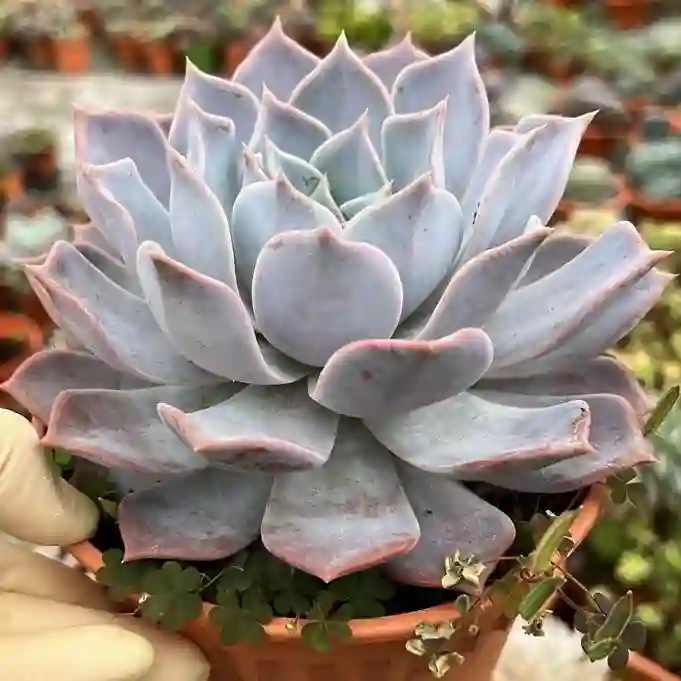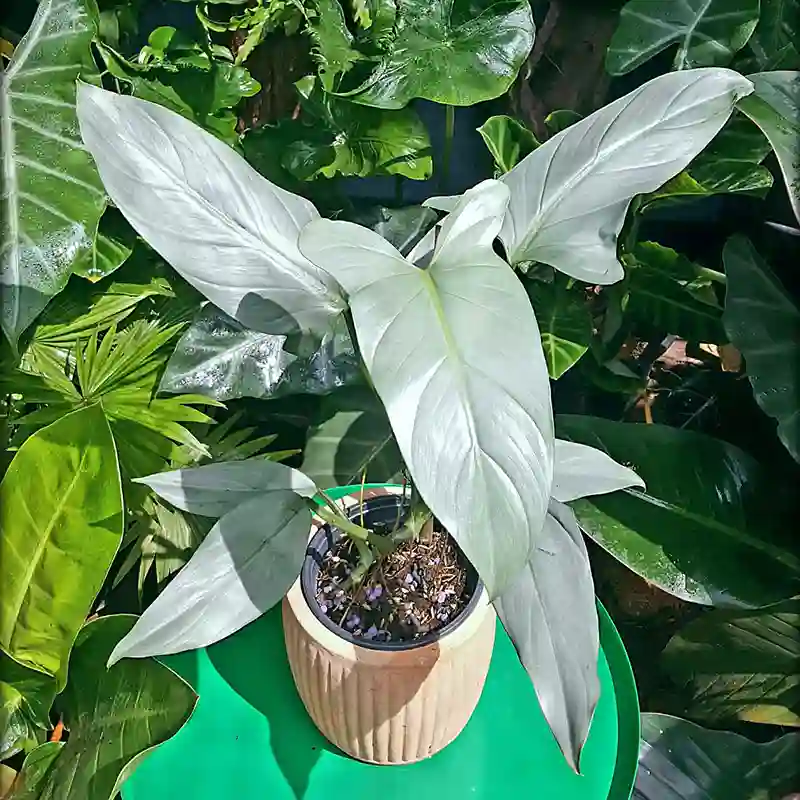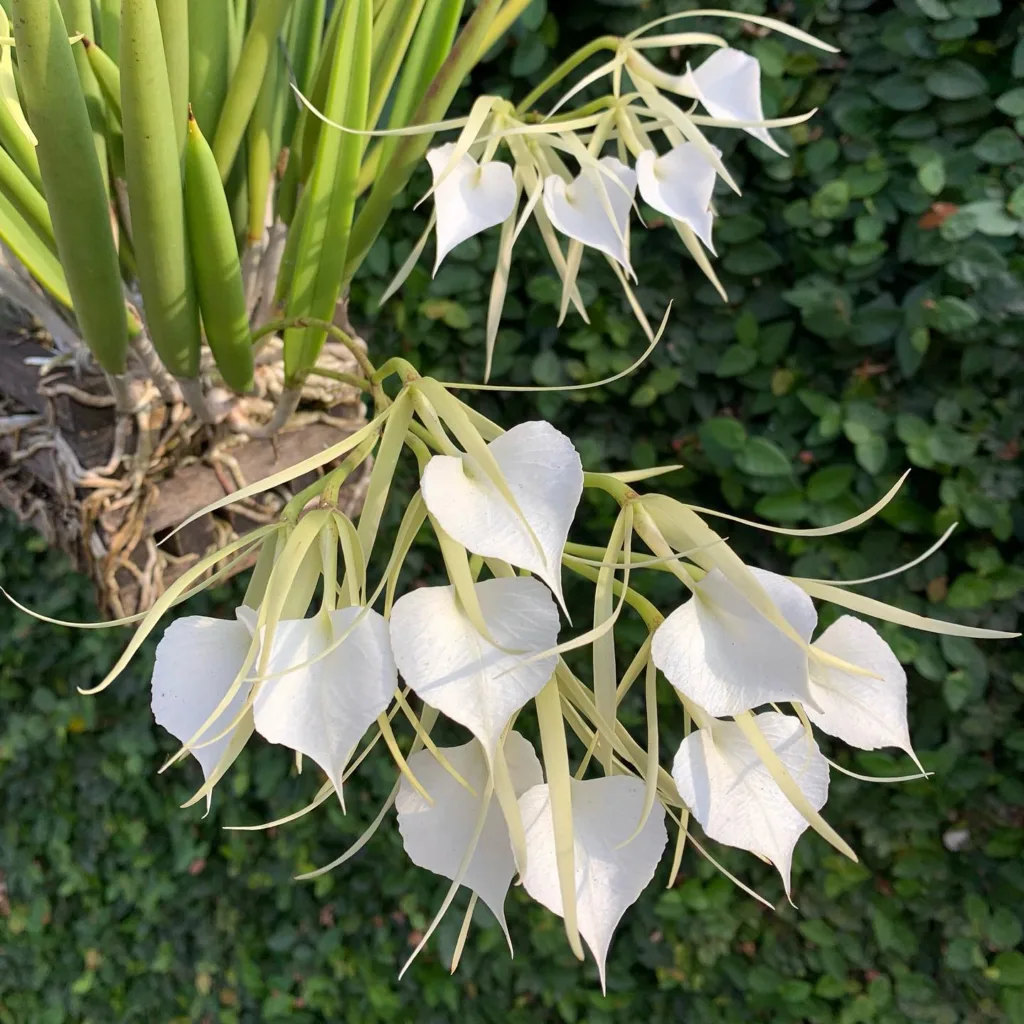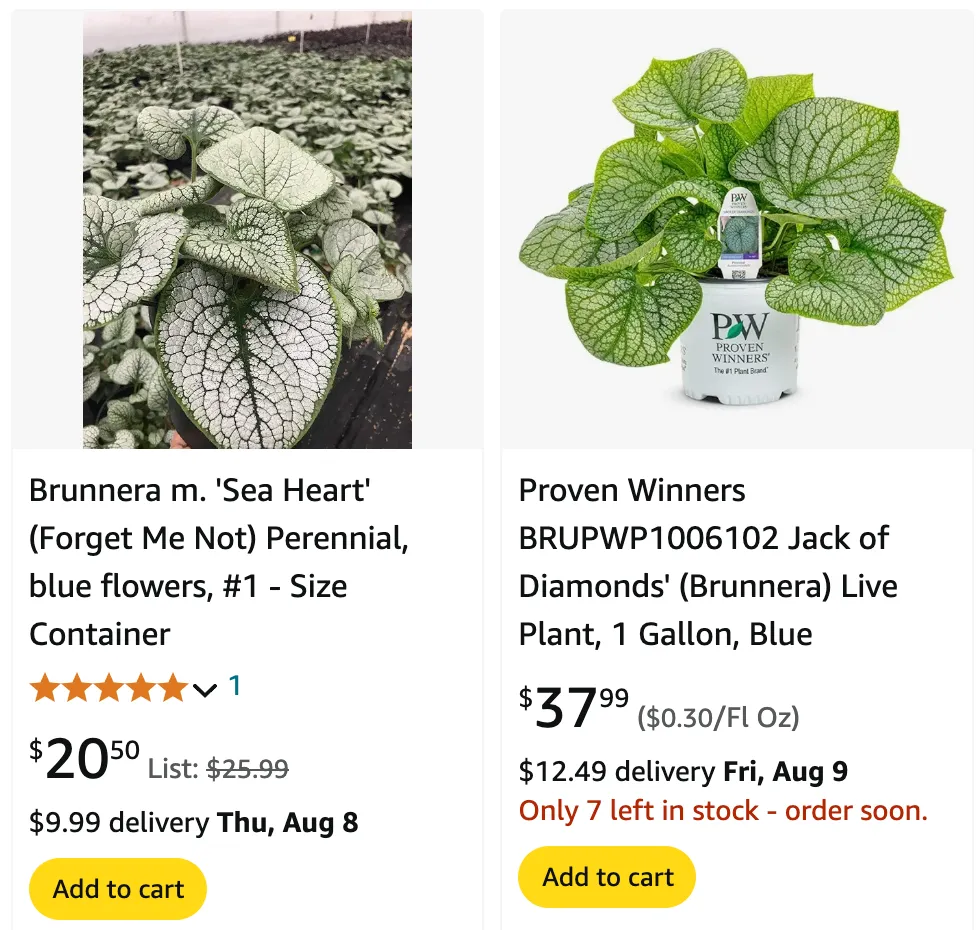
FAQs About Brunnera
As a passionate gardener, I’ve spent a lot of time cultivating various plants, and Brunnera has become one of my favorites. Here are some frequently asked questions about Brunnera, along with my personal experiences and insights.
What is Brunnera?
Brunnera belong to the Boraginaceae family, commonly known as Siberian Bugloss or False Forget-Me-Not, is a perennial plant appreciated for its heart-shaped leaves and clusters of tiny blue flowers. It’s a shade-loving plant, making it perfect for woodland gardens or shaded borders. The foliage is often variegated, adding a touch of brightness to darker garden areas.
Brunnera species
- Brunnera macrophylla (Adams) I.M.Johnst.
- Brunnera orientalis (Schenk) I.M.Johnst.
- Brunnera sibirica Steven
Is Brunnera deer resistant?
Yes, Brunnera is deer resistant. In my garden, where deer are frequent visitors, Brunnera has remained unscathed. Deer tend to avoid this plant, likely due to its slightly rough texture. This makes Brunnera an excellent choice for gardens in areas with high deer populations.
Is Brunnera invasive?
Brunnera is not considered invasive. While it can spread through self-seeding and rhizomes, it does so at a manageable rate. In my experience, it has stayed within its designated garden space without overwhelming neighboring plants.
Is Brunnera toxic to dogs?
No, Brunnera is not toxic to dogs. This makes it a safe choice for pet owners who want to beautify their gardens without worrying about their furry friends. My dogs have roamed around the garden freely, and I’ve never had any issues with Brunnera.
How to propagate Brunnera?
Brunnera can be propagated through division or seeds. I’ve found division to be the easiest method. In early spring or fall, dig up a mature plant and separate the rhizomes, ensuring each division has roots and a few leaves. Replant the divisions and water them well. Seed propagation is also possible but takes longer to establish.
What to plant with Brunnera?
Brunnera pairs well with other shade-loving plants. I often plant it alongside hostas, ferns, and astilbes. The contrasting foliage and textures create a visually appealing garden bed. It also complements spring-blooming bulbs like daffodils and tulips.
Are Brunnera evergreen?
Brunnera is not evergreen. In colder climates, the foliage dies back in winter. However, in milder regions, some leaves may persist through the winter. In my garden, the foliage typically withers away after the first hard frost, but it reemerges robustly in spring.
Can Brunnera be divided?
Yes, Brunnera can be divided, and it’s an effective way to propagate the plant. I usually divide my Brunnera every three to four years to maintain its vigor and prevent overcrowding. Division is best done in early spring or fall.
Can you grow Brunnera from seed?
Yes, Brunnera can be grown from seed. I have started Brunnera from seeds by sowing them in trays in late winter and then transplanting the seedlings outdoors in spring. It takes a bit more time and patience, but it’s rewarding to watch them grow from tiny seeds into beautiful plants.
Can you grow Brunnera indoors?
While Brunnera is primarily an outdoor plant, it can be grown indoors in a well-lit area. I’ve tried growing Brunnera indoors, but it requires consistent moisture and high humidity, which can be challenging to maintain. It’s more suited for outdoor gardens where conditions are more favorable.
Do Brunnera die back in winter?
Yes, Brunnera typically dies back in winter, especially in colder climates. The foliage will die after the first frost, and the plant will go dormant until spring. In my garden, this dieback is a natural part of its life cycle, and it returns with fresh growth when temperatures warm up.
Do rabbits eat Brunnera?
Rabbits generally avoid Brunnera. In my experience, rabbits have not shown any interest in nibbling on the leaves. This adds to Brunnera’s appeal as a low-maintenance, pest-resistant plant.
Brunnera vs. Forget-Me-Not
Brunnera and Forget-Me-Not are often compared due to their similar blue flowers. However, Brunnera has more substantial, heart-shaped leaves and a longer lifespan as a perennial. Forget-Me-Nots are annuals or biennials with smaller leaves and a more delicate appearance. In my garden, I prefer Brunnera for its robust foliage and longer-lasting presence.
How to care for Brunnera?
Caring for Brunnera involves providing the right conditions and regular maintenance. Plant Brunnera in well-drained, humus-rich soil in a shady or partially shaded location. Keep the soil consistently moist but not waterlogged. I mulch around my Brunnera plants to retain moisture and suppress weeds. Fertilize in early spring with a balanced fertilizer to encourage healthy growth.
Can Brunnera tolerate sun?
While Brunnera prefers shade, it can tolerate some morning sun. In my garden, I have a few Brunnera plants in spots that receive morning sunlight and they do well, but I ensure they have enough shade during the hottest part of the day to prevent leaf scorch.
How to handle pests and diseases in Brunnera?
Brunnera is generally pest-resistant, but it can occasionally suffer from powdery mildew or leaf spot. To prevent these issues, ensure good air circulation around the plants and avoid overhead watering. If I notice any signs of disease, I promptly remove affected leaves and treat with an appropriate fungicide.
Brunnera is a versatile and beautiful addition to any garden, providing stunning foliage and delicate flowers. Its low maintenance and resistance to pests and diseases make it a favorite of mine. Whether you’re an experienced gardener or a beginner, Brunnera is sure to bring charm and elegance to your garden.
If i die, water my plants!
